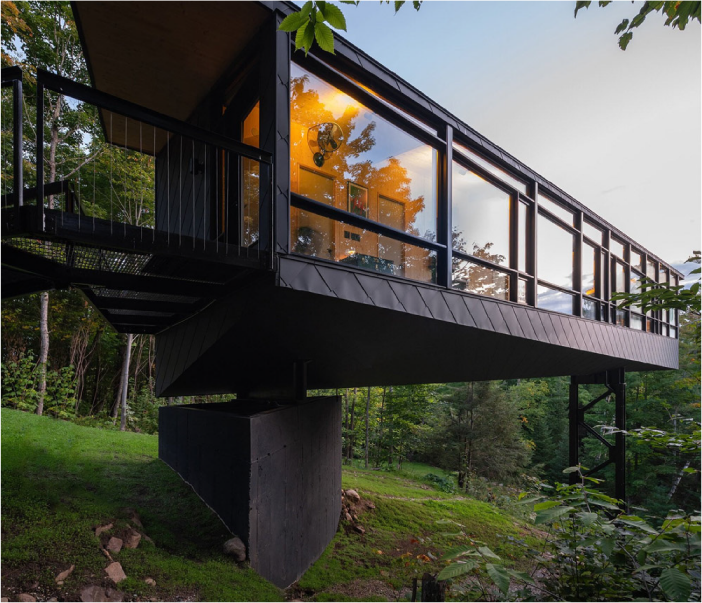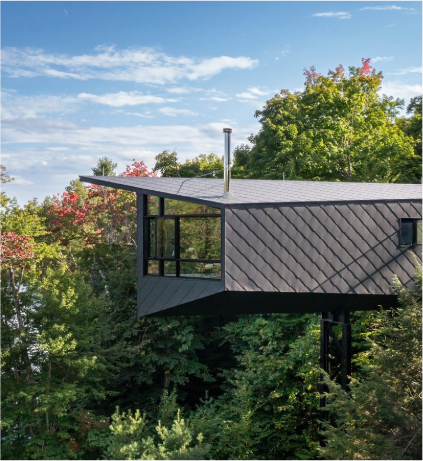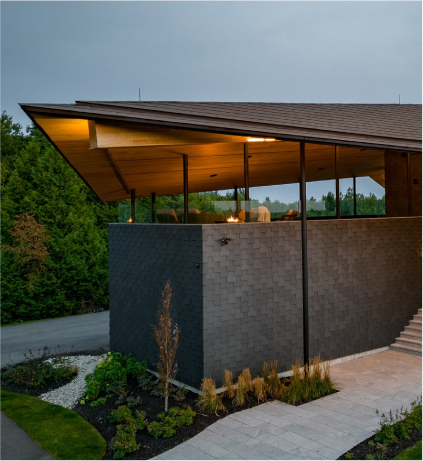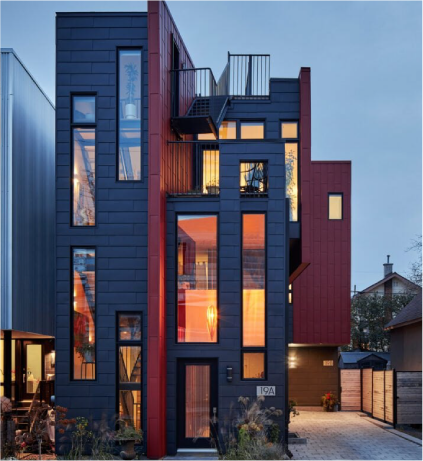Beautiful + Livable +
Sustainable
How you build your home is one of the most important decisions you will ever make. It’s a powerful emotional and financial investment for you, but we’ve also entered an era in which our choices can make a big difference to the future of our planet.
The good news is that there are lots of ways to build that are ecologically kinder than in the past (see below). We provide sustainable home design and architectural services for clients across North America, even if they live in cold climate areas like Ottawa and Toronto. (Yes, sustainable living is possible beyond the West Coast!) And you don’t have to sacrifice beauty, comfort, or functionality: we combine the green aspect of your home with other important architectural and practical considerations. For example, some of our clients need a “forever home” suitable for ageing in place. It’s all very personal because every home we design is the outcome of a highly collaborative process with our client.
Is building sustainably more challenging? Of course it is. But Kariouk Architects has a long history of embracing ambitious project requirements and using them to create uniquely beautiful and liveable homes. We call it, “architecture with soul.”
EXAMPLE PROJECTS
Award-Winning Sustainability
Our m.o.r.e. Cabin has won multiple awards, including a Merit Award in the 2024 AIA New York Design Awards, one of architecture’s most prestigious international accolades. During the presentation, jurors commented on its innovative approaches to sustainability. The Cabin has also been featured in numerous magazines and the Exploring Alternatives sustainable building video series.
The Forest Retreat project is also a multi-award winning project, including a Wood Design and Building Award from the Canadian Wood Council.
LEED-Certified Architecture
If you have your heart set on having a LEED-certified home, we have a LEED AP (Accredited Professionals) certified architect on our team. We can crunch the numbers to ensure that your home achieves the LEED level you need.

Approaches to Sustainable Home Design
We’re dedicated to using responsibly sourced natural materials like wood, especially mass timber. But there are other ways to design sustainably that have even more impact, especially when it comes to energy consumption and performance. We pursue the use of the following passive and technology-based approaches (and more… there are too many to list here).
- Build a smaller home: Right now, “green” systems come with a premium price. It’s much cheaper to build a smaller home that uses fewer materials and requires less energy to heat and cool. Because they’re well-designed you don’t notice the smaller footprint.
- Site the home so you won’t need a car: Choose a location close to where you work, shop, and socialize. Walking everywhere will also make you a much happier person.
- Preserve existing habitat: Build on an already-cleared lot, and consider building to preserve existing trees and watershed.
- Insulate your roof: Good roof insulation (at least R-50) will make your home easier and less expensive to heat and cool throughout its lifetime.
- Incorporate passive design principles: Using orientation, layout, daylighting, natural ventilation, air tightness, insulation, and thermal mass will make your home more energy-efficient and comfortable at a minimal cost.
- Install a heat pump: Maintaining a comfortable indoor temperature with an air source or a geothermal heat pump will save on fossil fuel use. Large geothermal systems can heat your home and your water.
- Choose quality: Building a home with an attractive design, quality materials, and excellent craftsmanship will mean your home lasts longer with much lower costs for maintenance and replacement of materials in the long run.
The impact of these choices often depends on the temperature extremes of where you live and how your local energy grid is powered. We can help you weigh all of the considerations.
Why Sustainable Architecture Matters
Many of us are becoming more concerned about caring for our environment on a variety of fronts, from our carbon footprint to our water usage. Where and how we build our homes is one of the biggest ways we can make a difference:
- According to the American Institute for Architecture, buildings account for 39% of global CO2 emissions¹.
- As our population continues to grow the impact of buildings is set to double by 2060².
- Wildlife populations have dropped an average of 69% since 1970, according to the latest Living Planet Report from World Wildlife Fund International³.
- Habitat for wildlife is becoming more scarce in part because of urban sprawl⁴. Sprawl also harms our watersheds and human health.
- Western lifestyles and the industries that support them are contributing to water pollution, scarcity issues, and flooding in North America and around the world⁵.
Choosing sustainable home design matters, and will matter even more in the future. If you’re ready to work with us to design a home that meets all your needs, we’d love to hear from you.
References
- https://blueprintforbetter.org/articles/architectures-carbon-problem/
- https://blueprintforbetter.org/articles/architectures-carbon-problem/
- https://wwf.ca/stories/living-planet-report-2022-wildlife-populations-plummet-69-percent/
- https://www.nature.com/scitable/knowledge/library/the-characteristics-causes-and-consequences-of-sprawling-103014747/
- https://abcnews.go.com/US/parts-america-water-crisis/story?id=98484121




